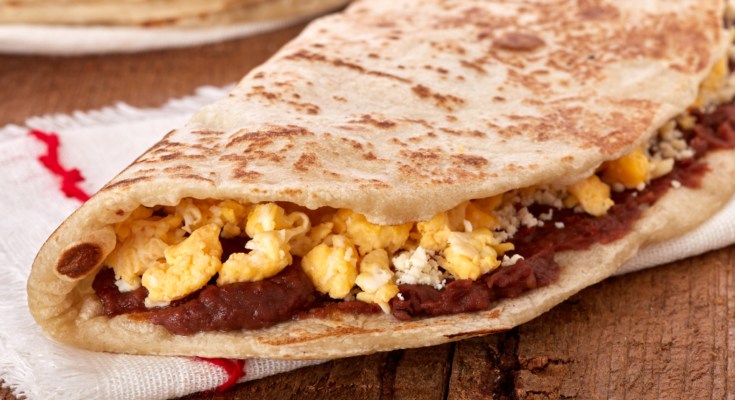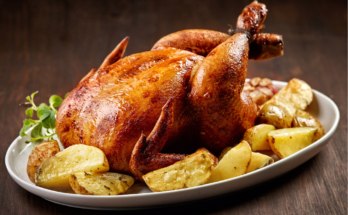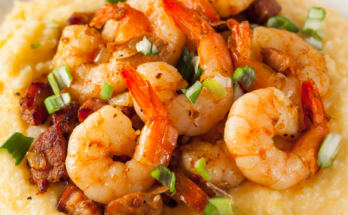When you think of Central American cuisine, dishes like tacos from Mexico or pupusas from El Salvador might come to mind. But nestled in the heart of this vibrant region lies Honduras, a country with its own culinary gem: the baleada. This simple yet flavorful dish is widely regarded as the quintessential typical food of Honduras, loved by locals and celebrated by food enthusiasts worldwide. Whether enjoyed as a quick street snack or a hearty homemade meal, the baleada embodies the spirit of Honduran culture—unpretentious, welcoming, and deeply satisfying. In this post, we’ll dive into what makes the baleada so special, its origins, variations, and even how you can make it at home.
What Is a Baleada?
At its core, a baleada is a flour tortilla stuffed with a variety of delicious fillings. The foundation of this Honduran classic is typically refried red beans, crumbled cheese, and a dollop of mantequilla—a rich, creamy Honduran-style sour cream. Folded in half and served warm, it’s a handheld delight that’s as versatile as it is tasty. While the basic version, known as baleada sencilla (simple baleada), sticks to these essentials, Hondurans love to get creative, adding ingredients like scrambled eggs, avocado, or even grilled meats to elevate the experience.
The baleada’s charm lies in its simplicity. It’s not a dish that demands hours of preparation or exotic ingredients—it’s everyday food made with love, using staples found in most Honduran kitchens. Yet, despite its humble nature, it’s packed with flavor and texture, offering a perfect balance of creamy, savory, and slightly tangy notes. Whether you’re grabbing one from a bustling street vendor in San Pedro Sula or enjoying a homemade version with family, the baleada is a taste of Honduras you won’t soon forget.
The Origins of the Baleada: A Taste of History
Like many beloved dishes, the baleada’s origins are steeped in lore, with stories passed down through generations. While its exact beginnings are debated, most agree it hails from Honduras’ northern coast, particularly the city of La Ceiba, a vibrant Caribbean port known for its lively culture and food scene. One popular tale credits a resourceful street vendor with its creation. Legend has it that this woman sold flour tortillas filled with beans and cheese near banana plantations in the early 20th century. Her food was so popular that she became a local icon—until one day, she was caught in a shooting and injured by bullets (balas in Spanish). Her customers began calling her la baleada—the shot woman—and the name eventually stuck to her signature dish.
Another theory suggests the name comes from the way the whole beans used in early versions would spill out like little “bullets” when bitten into. Over time, the recipe evolved to use mashed refried beans, but the playful nickname endured. Whatever the truth, the baleada’s rise from a humble street food to a national treasure speaks to its universal appeal and the ingenuity of Honduran cooks.
Why the Baleada Is Honduras’ Typical Food
Honduras boasts a rich culinary tapestry woven from indigenous Lenca traditions, Spanish influences, and Caribbean flavors. Corn, beans, plantains, and fresh seafood dominate the diet, especially along the coast. Yet, among all these offerings, the baleada stands out as the country’s most iconic dish. Why? It’s a perfect reflection of Honduran life—practical, flavorful, and community-driven.
For one, baleadas are incredibly accessible. You’ll find them everywhere—from roadside stalls to family dining tables to restaurants catering to tourists. They’re affordable, filling, and adaptable to whatever ingredients are on hand, making them a staple for people of all walks of life. Plus, they’re a one-dish wonder, suitable for breakfast, lunch, dinner, or even a late-night snack. In a country where food is a celebration of togetherness, the baleada’s portability and shareable nature only add to its charm.
The dish also showcases Honduras’ love for hearty, comforting flavors. The combination of earthy red beans, tangy mantequilla, and salty cheese hits all the right notes, while the soft, warm tortilla ties it together. It’s no wonder Hondurans proudly claim the baleada as their own—it’s a culinary hug in every bite.
Variations of the Baleada
One of the baleada’s greatest strengths is its versatility. While the baleada sencilla is a timeless classic, there are plenty of ways to dress it up. Here are some popular variations you might encounter:
-
- Baleada Mixta: This version adds scrambled eggs to the mix, turning it into a protein-packed meal perfect for breakfast or brunch. The creamy eggs blend beautifully with the beans and cheese, adding a fluffy texture.
-
- Baleada Super Especial: For a heartier option, this loaded baleada includes extras like grilled chicken, beef, or chorizo (a spiced sausage). Avocado slices and even plantains might make an appearance, transforming it into a full-on feast.
-
- Baleada con Todo: Literally “with everything,” this is the ultimate indulgence. It might feature beans, cheese, mantequilla, eggs, meat, avocado, and a drizzle of hot sauce or pickled onions for a zesty kick.
No matter the variation, the key is balance. The tortilla acts as a blank canvas, letting the fillings shine without overwhelming the palate. It’s this flexibility that keeps the baleada fresh and exciting, even for those who eat it daily.
How to Make Your Own Honduran Baleada

Ready to bring a taste of Honduras to your kitchen? Making baleadas at home is easier than you might think. Below is a recipe for a classic baleada sencilla, with tips for customizing it to your liking. This version serves 4 and takes about 30 minutes from start to finish.
Ingredients
For the Tortillas:
-
- 2 cups all-purpose flour
-
- 1 teaspoon salt
-
- 1 teaspoon baking powder
-
- 2 tablespoons vegetable oil or shortening
-
- ¾ cup warm water (adjust as needed)
For the Filling:
-
- 1 cup cooked red beans (Central American or small red beans work best)
-
- 2 tablespoons vegetable oil (for frying beans)
-
- ½ cup crumbled queso fresco or a mild feta cheese
-
- ¼ cup Honduran mantequilla (or sour cream thinned with a splash of milk)
-
- Salt to taste
Optional Add-Ins:
-
- Scrambled eggs
-
- Sliced avocado
-
- Cooked chorizo or grilled meat
-
- Hot sauce or pickled onions
Instructions
-
- Make the Tortillas: In a large bowl, mix the flour, salt, and baking powder. Add the oil or shortening and rub it into the flour with your fingers until it resemble coarse crumbs. Slowly add warm water, mixing until a soft dough forms. Knead for 5 minutes until smooth. Divide into 4 equal balls, cover, and let rest for 15 minutes. Roll each ball into an 8-10 inch circle, about ¼ inch thick. Heat a skillet or griddle over medium-high heat and cook each tortilla for 1-2 minutes per side, until lightly browned and puffed. Keep warm under a towel.
-
- Prepare the Beans: If using canned beans, drain and rinse them. For dried beans, cook until tender (an Instant Pot works wonders here). Heat oil in a skillet over medium heat, add the beans, and mash them with a spoon or potato masher. Season with salt and cook for 5-7 minutes, stirring occasionally, until thick and creamy.
-
- Assemble the Baleadas: Lay a warm tortilla flat on a plate. Spread a generous layer of refried beans over half of it. Sprinkle with crumbled cheese and drizzle with mantequilla. Fold the tortilla in half.
-
- Customize (Optional): Add scrambled eggs, avocado, or your favorite toppings before folding. For a crispy twist, lightly grill the folded baleada on the skillet for 1 minute per side.
-
- Serve: Enjoy immediately, paired with a fresh fruit juice like pineapple or tamarind for a true Honduran experience.
Tips for Success
-
- Tortillas: Homemade is best for authenticity, but store-bought flour tortillas work in a pinch. Look for thick, soft ones.
-
- Beans: Red beans are traditional, but pinto beans can substitute if needed. Avoid black beans for the classic flavor.
-
- Mantequilla: If you can’t find Honduran cream, mix sour cream with a little milk or cream for a similar consistency.
The Baleada’s Cultural Significance
Beyond its taste, the baleada holds a special place in Honduran hearts. It’s a dish tied to memories—of mornings spent with family, afternoons at the market, or late-night chats with friends. It’s a symbol of resilience, too, born from the creativity of hardworking vendors who turned simple ingredients into something extraordinary. In a way, the baleada mirrors Honduras itself: modest yet full of character, with a warmth that draws people in.
For Hondurans living abroad, making baleadas is a way to stay connected to home. It’s comfort food that transcends borders, bringing a slice of Central America to kitchens worldwide. And for travelers, tasting a baleada from a street cart in Tegucigalpa or La Ceiba is an essential part of experiencing the country’s soul.
Final Thoughts
The baleada may not have the global fame of some Latin American dishes, but that’s part of its magic. It’s a hidden treasure, waiting to be discovered by anyone willing to explore Honduras’ culinary landscape. As a typical food, it captures the essence of Honduran cuisine—straightforward, flavorful, and made for sharing. So next time you’re craving something new, skip the usual suspects and whip up a baleada. You’ll be savoring a piece of Honduras with every bite.
Have you tried a baleada before? What’s your favorite way to enjoy it? Let us know in the comments below—we’d love to hear your thoughts!



